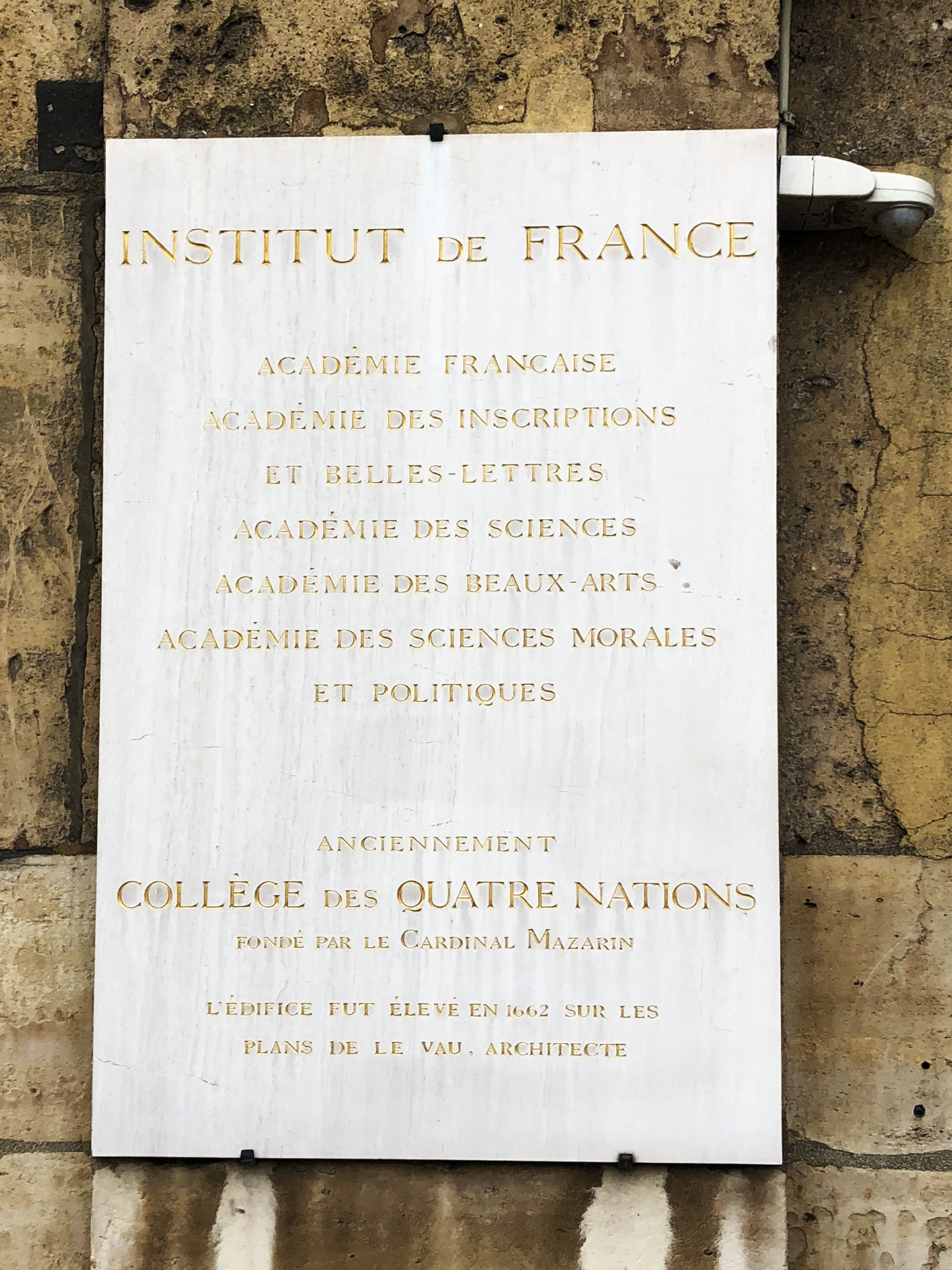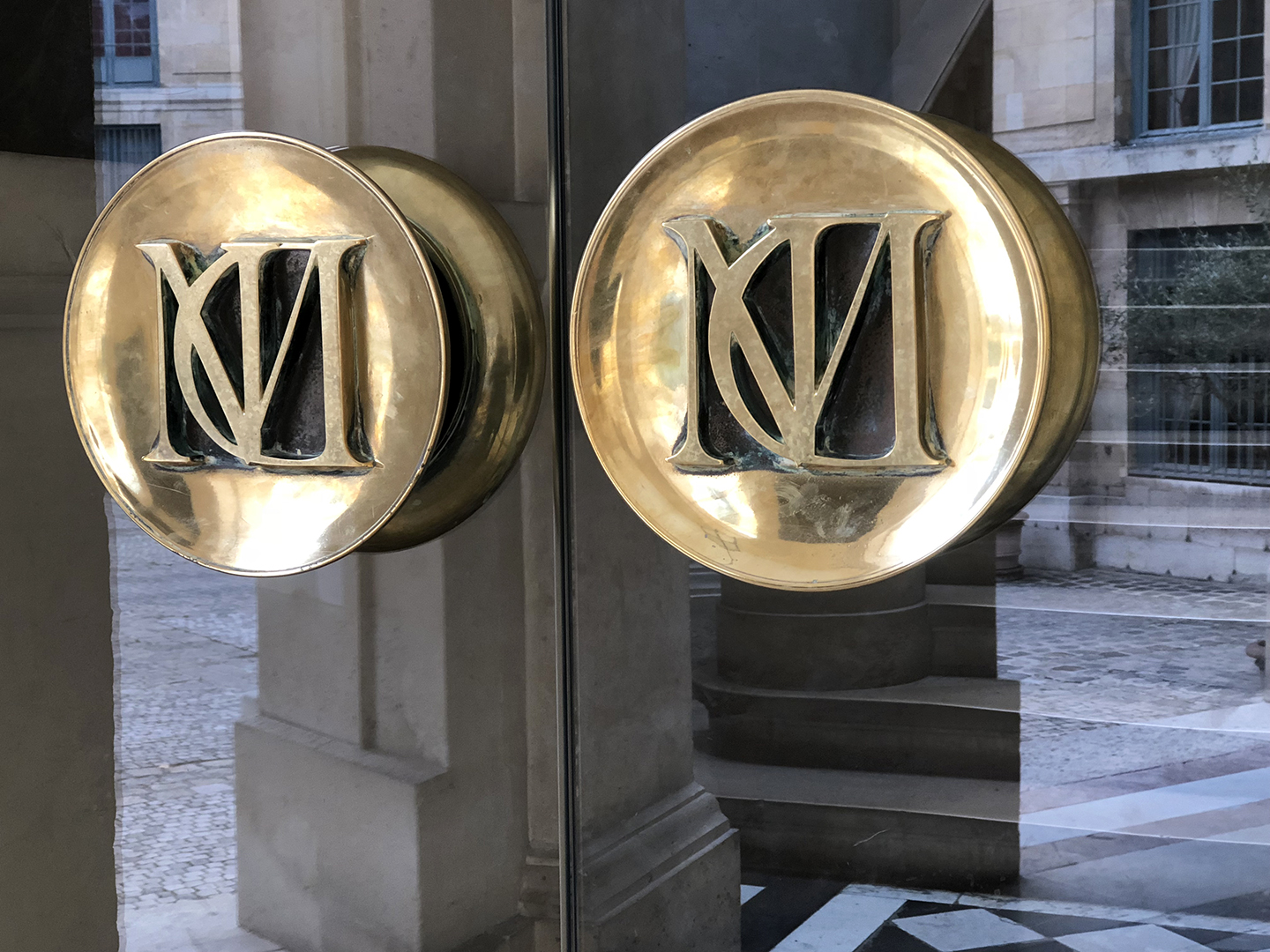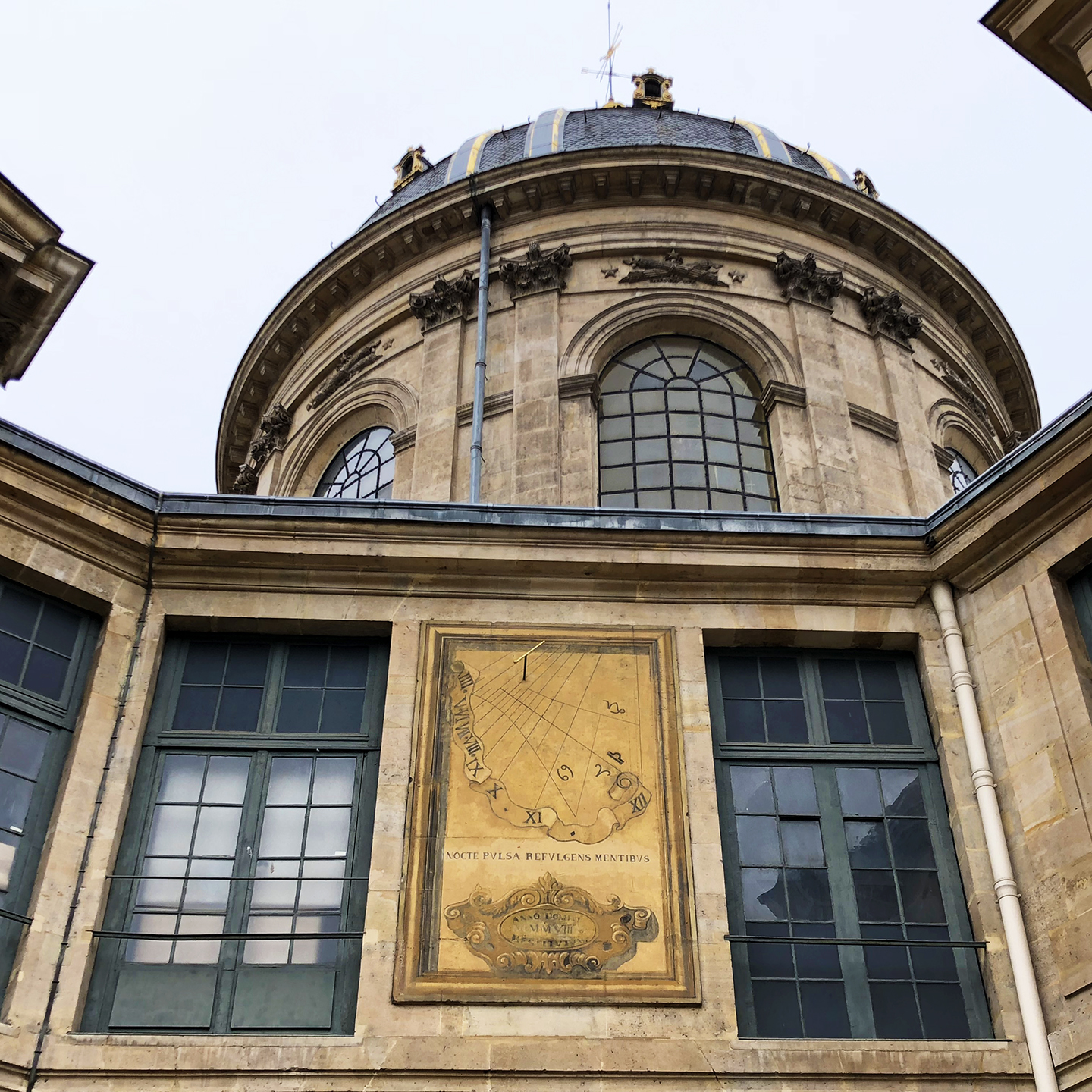You are undoubtedly familiar with l’Académie Française, the body of 40 immortels who are charged with preserving and perfecting the French language. They gather under the dome of the Institut de France on quai de Conti. You can’t miss the sight of its cupola when you cross the Seine from the Louvre to the Left Bank: passerelle des Arts ends right in front of the imposing building.
Several Académies at l’Institut de France
Originally built in 1662 as the Collège des Quatre Nations, l’Institut is not open to the public, except during the Journées du Patrimoine when you can tour the chapel and possibly sit in one of the Académiciens’ fauteuils de velours vert.
A panoramic view of the courtyard
You may not know that the XVIIth century building also houses the bibliothèque Mazarine in its left wing. As the oldest public library in France, it is open for free visits and organized tours: simply walk through the vaulted stone entrance to reach a rectangular paved courtyard, a bit reminiscent of the Sorbonne.
CM for Cardinal Mazarin
I spent a few minutes admiring the symmetry of the old college, its mullioned windows, and its slate roofs. I turned left, climbed the wide stairs below the triangular frontispiece, and took note of the large brass handles carved with CM, the mark of Cardinal de Mazarin.
A grand entrance to the library
Cardinal Jules de Mazarin succeeded Richelieu as Chief Minister of Louis XIII and served as Louis XIV’s educator and Chief Minister as well. His personal library of some 40,000 volumes was originally kept in his hôtel particulier on rue Richelieu. In his will, he made provisions to have the Collège des Quatre Nations built on quai de Conti where his extensive book collection would be housed.
La petite galerie
A spiral staircase leads to a double set of carved doors on the third level. I entered the Petite Galerie, a small reading room lined with books and wooden drawers presumably filled with the French equivalent of library cards. They might just be relics: I noticed several computer stations throughout the library.
La grande galerie
Old habits die hard: passing through heavy wood doors, the sound of my boots on the parquet seemed a bit loud. In the Grande Galerie, I paused and took in the quietness, the rich tones of the wood, the orderly arrangement of massive tables, cane-backed chairs, dark green reading lamps, and ornate chandeliers.
Leather-bound books. Old, old books.
Ancient volumes line the shelves on the walls; most are bound in leather with faded titles in gold leaf. Apparently, the library holds 600,000 printed books and tends to specialize in historical science. A 1455 Guttenberg bible is locked in a vault.
A 1693 celestial globe by Coronelli
Mazarin’s private collection was transferred to this site along with many decor elements from his original library: columns, pedestals, wood panels, etc.
Unknown Roman. The grande galerie is lined with bronze and marble busts featuring Roman emperors, authors (such as Cicero, Sophocles or Aristotle) and scientists from the XVII and XVIIIth centuries.
The bouquinistes are closed today…
In the main reading room, tall windows look north: toward the quay, the Seine, the bouquinistes stalls, the Louvre.
The chapel cupola and the courtyard
On the southern side, the gilded cupola above the chapel stands front and center.
The grand staircase was added in 1824
I walked back to the entrance, checking out every marble and bronze bust that seemed to watch over the students, making sure the beauty of their surroundings would not distract them from their work. More Romans and Greeks followed me down the spiral staircase.
Sundial. Nocte pulsa refulgen mentibus: chasing away the night, enlightening the minds.
Back at ground level, the chapel and its gold sundial towered over passersby who were hurrying up indoors: a fine drizzle had just started.
This is why you MUST walk into any open courtyard when strolling in Paris…
I took one last look at the peaceful courtyard, pulled out my umbrella, and headed out to a café.
Bibliothèque Mazarine official website
Vocabulary
Immortel: immortal. Members of the Académie Française are called immortels. Like you and me, they will pass on but the French language will never die (oh, wait: what happened to Latin!!!)
La passerelle: pedestrian bridge
Le fauteuil de velours vert: green velvet armchair
La bibliothèque: library
L’hôtel particulier (m): private mansion
Le bouquiniste: used bookseller who displays his merchandise in green kiosks lining the Seine















